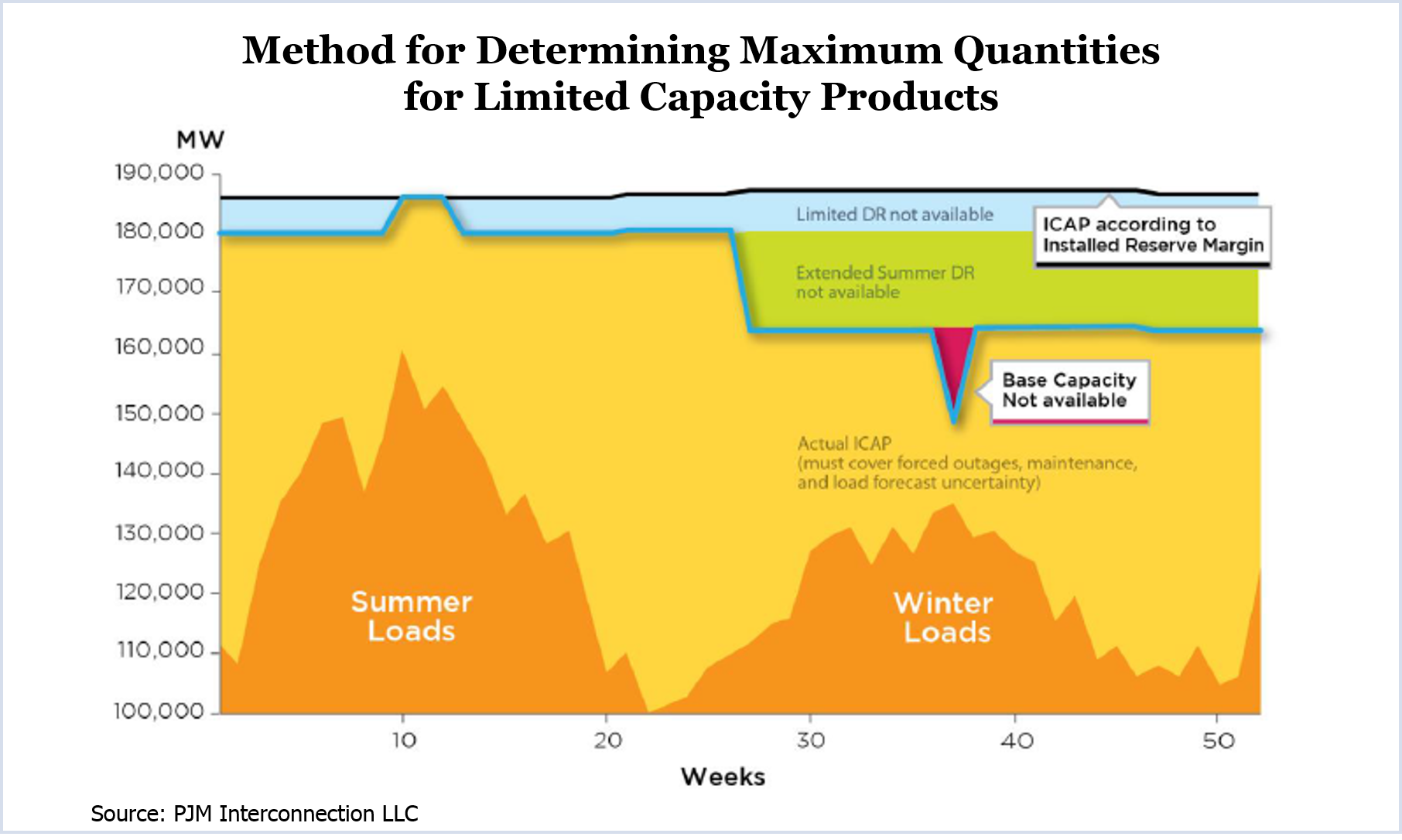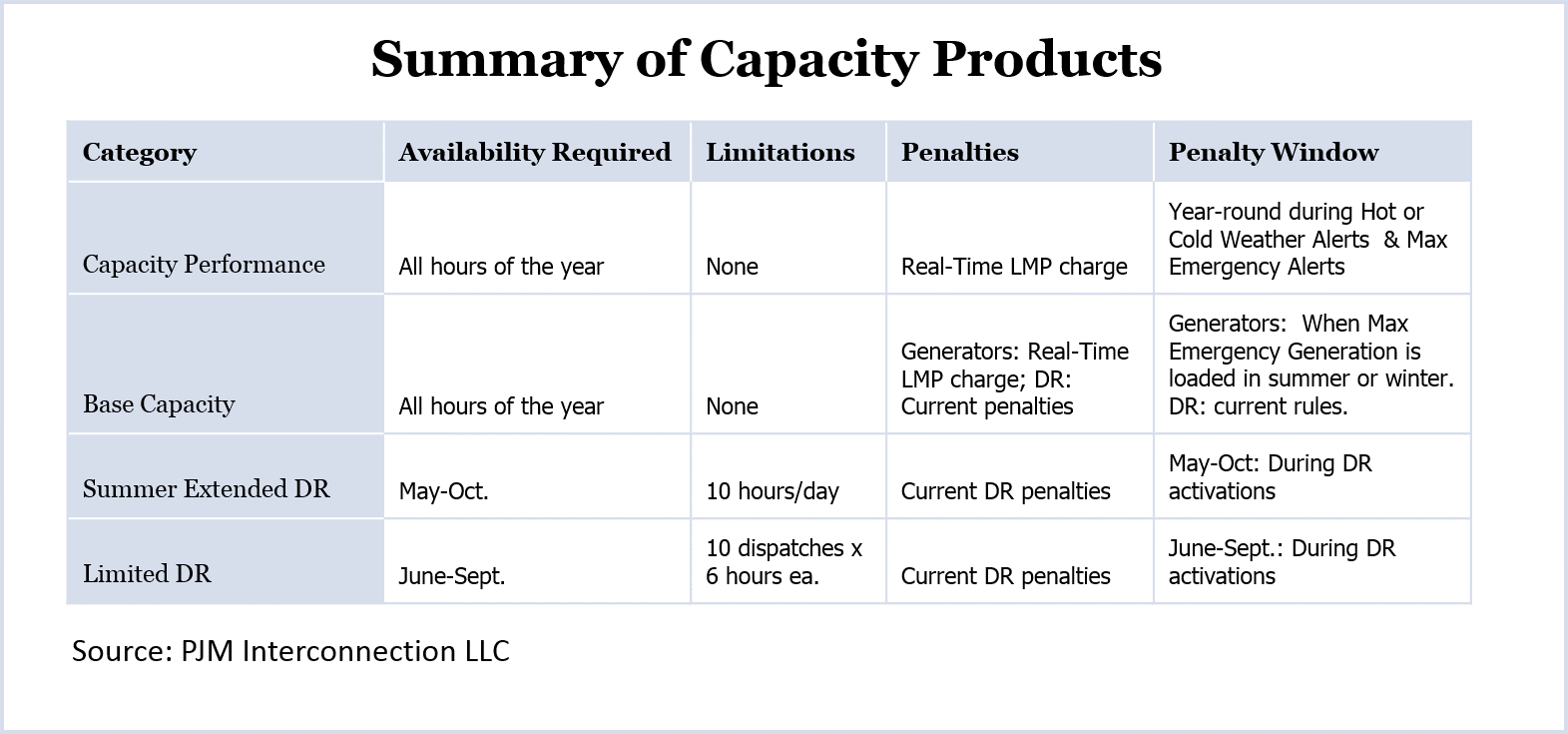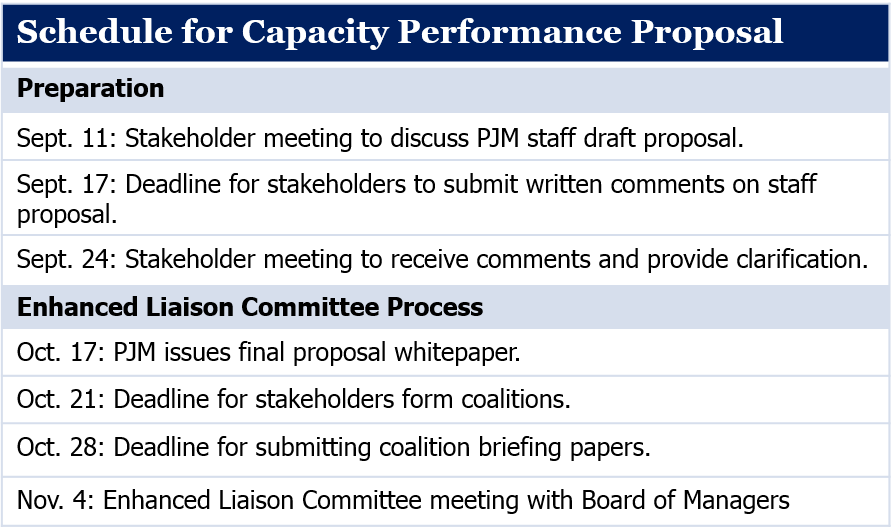By Rich Heidorn Jr.

PJM officials said they were willing to change — or had not decided on — numerous elements of the proposal.
“Staff was being very clear that they are open to and looking for feedback,” said Nancy Bagot, vice president for regulatory policy for the Electric Power Supply Association, after the four-hour meeting. “I think it’s too early for us to have formed any opinions — even to ask good questions. I do get the feeling that a lot could change.”
PJM proposed a series of changes to the capacity market on Wednesday, the centerpiece of which is the addition of the Capacity Performance product. It would supplement existing Annual Capacity (renamed Base Capacity), Extended Summer and Limited Demand Response offerings. (See PJM: New Capacity Product Needed for Reliability.)
The new product would include generation, demand response and energy efficiency providers that can guarantee their availability during Hot and Cold Weather Alerts and Maximum Emergency Generation Alerts. The resources would need to demonstrate they can produce their committed installed capacity for 16 hours for each of three consecutive days.
Enhanced Liaison Committee
PJM said they will invoke a never-used “Enhanced Liaison Committee” process so that the new rules can be filed with the Federal Energy Regulatory Commission in time for the winter of 2015/16. The process was developed in 2011 to allow members to provide input on issues for which consensus is unlikely and the Board of Managers acts independently. (See PJM to Hike Penalties, Incentives to Improve Winter Reliability.)
While the board will have the last say on what is submitted to FERC — and protests are almost certain, regardless of the final package — PJM would like to eliminate as many points of conflict as possible beforehand.
Executive Vice President for Markets Andy Ott said that officials were willing to adjust the metrics used to determine requirements and penalties and how the new rules would apply to vertically integrated utilities.
Although no one voiced overt opposition to the proposal Friday, one stakeholder representing consumers raised concerns over market power.
Potential Changes
One item that may be changed is the use of installed capacity (ICAP) rather than unforced capacity (UCAP) in determining requirements and penalties.
ICAP represents the plant’s maximum output during summer; UCAP is the ICAP value minus its recent forced outage rate (EFORd).
FirstEnergy’s Jim Benchek said the rule could be unfair to pump storage that has high ICAP values but lower offer amounts.
Ott said PJM officials would consider a change, agreeing with one questioner that the choice between the two measures was a “jump ball.”
“In the [proposal] they put an ‘I’ instead of a ‘U,’” Ott said.
Distribution of Penalty Revenues
Ott said staff may also reconsider how the penalty rules would apply to vertically integrated utilities and load-serving entities with Fixed Revenue Requirements.
PJM plans to distribute penalty revenues to load, unlike New England, which distributes them among “overperforming” resources.
Dave Pratzon of GT Power Group said distributing penalties to load could give load-serving entities with generation less incentive to improve performance than independent generators, who have no way to recover any of their penalties.
“It seems like you’re taking money out of one pocket and into another,” said Pratzon, whose company represents generators.
Ott agreed. “We have to deal with those who are indifferent to costs coming out of the capacity market,” he said.
Outside Management Control
Officials said they also plan to clarify the RTO’s definition of force majeure. The proposal allows no exclusions for force majeure “at this point,” PJM Chief Economist Paul Sotkiewicz said.
PJM has proposed changing current rules, which allow a generator to remove outages defined as “outside management control” from the forced outage rate that determines the capacity it can sell.
“The performance penalties ultimately adopted as part of this proposal will apply to generation resources regardless of the reason for a forced outage, and therefore it would be inconsistent to remove outside management control outages from the EFORd calculation,” PJM’s proposal said.
Penalties, ‘Unbounded’ Risk

The penalty would apply to whichever was lower: the quantity of MWs scheduled by PJM or the unit’s ICAP. A unit with a 100-MW ICAP commitment that was dispatched by PJM to produce 75 MW but produced only 25 MW would be penalized for the 50-MW difference.
PJM said the calculation is based on an ISO-NE model already approved by FERC.
PJM would set an annual cap, limiting the penalties applied to a Capacity Performance resource to 2.5 times the resource’s capacity revenues for the year. Penalties for Base Capacity resources would be limited to 1.5 times capacity revenues.
“Whenever we put too much risk on the seller at the plant, it shows up in cost. We could create so much unbounded risk that we could all be worse off when all is said and done,” said Mark Scott, a consultant for Old Dominion Electric Cooperative. “You want some pain, but you don’t want to kill them.”
Ott said officials believe the penalty has to be severe enough that resources that fail to perform suffer financial pain — not just the loss of capacity revenues.
“It has to be able to go negative in our opinion. Otherwise the worst-case scenario is I lose my capacity payment and I can be a price taker in the capacity auction and roll the dice” on getting dispatched.
But Ott said the 2.5 penalty multiplier could be changed. “We had to put a number out there. We get it. … That number is moveable.”
PJM may also expand on a proposal allowing generating companies to avoid penalties by offsetting an outage at one unit with production by another in their portfolios. Asked whether generators could replace the shortage through bilateral trades, Ott said, “I can’t think of a reason not to allow it. … We certainly can think about it.”
Scott asked why PJM was attempting to solve all the reliability issues through the capacity market rather than also using the energy market.
Ott said many generation owners would have to make capital investments to their plants to meet the Performance Capacity requirements. “It would be a forward investment. Therefore it made sense that there be an opportunity to recover that through capacity,” he said.
Risk Premium
One issue that Sotkiewicz acknowledged would be controversial is the inclusion of a risk premium in addition to the current 10% adder allowed for “hard-to-quantify” costs.
“Given the change in the penalty structure, we think it’s appropriate to include an explicit risk premium,” he explained.
PJM says the risk premium will ensure “symmetry between risk and reward” for Capacity Performance resources. PJM proposed the premium be based on the 7% pool-wide EFORd, multiplied by the historic average of Hot and Cold Weather Alert hours, multiplied by the average real-time LMP at the generation bus.
Using the 7% EFORd ensures generators will have the incentive to make the operations, maintenance and other investments “to achieve significantly better performance than PJM has historically observed during peak periods,” PJM said.
American Electric Power’s Dana Horton asked whether his calculation of the premium — about $10/MW-day — was accurate. “Yes, that is the order of magnitude,” Sotkiewicz said.
Market Power Concerns

Current rules require capacity resources to offer into the day-ahead energy market. PJM said it’s “an open question” how that obligation should apply to the new product.
“If all capacity were required to satisfy the criteria for the Capacity Performance product, then the current must-offer requirement would make sense,” PJM’s proposal says. “However, if there are multiple products, it is not clear how the must-offer requirement should apply.”
“At a minimum, the must-offer requirement to offer into the capacity market as one type of product or another should apply. But with multiple products, market incentives and competitive forces should then take over with resources offering in the product area that will result in the most surplus (clearing price minus the cost of providing the product).”
Stakeholders will meet again on Sept. 11 to further discuss the proposal.



